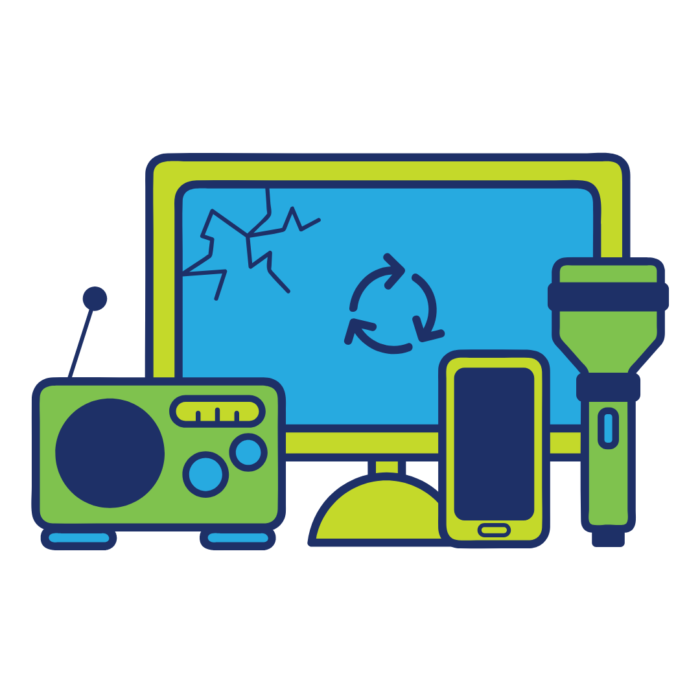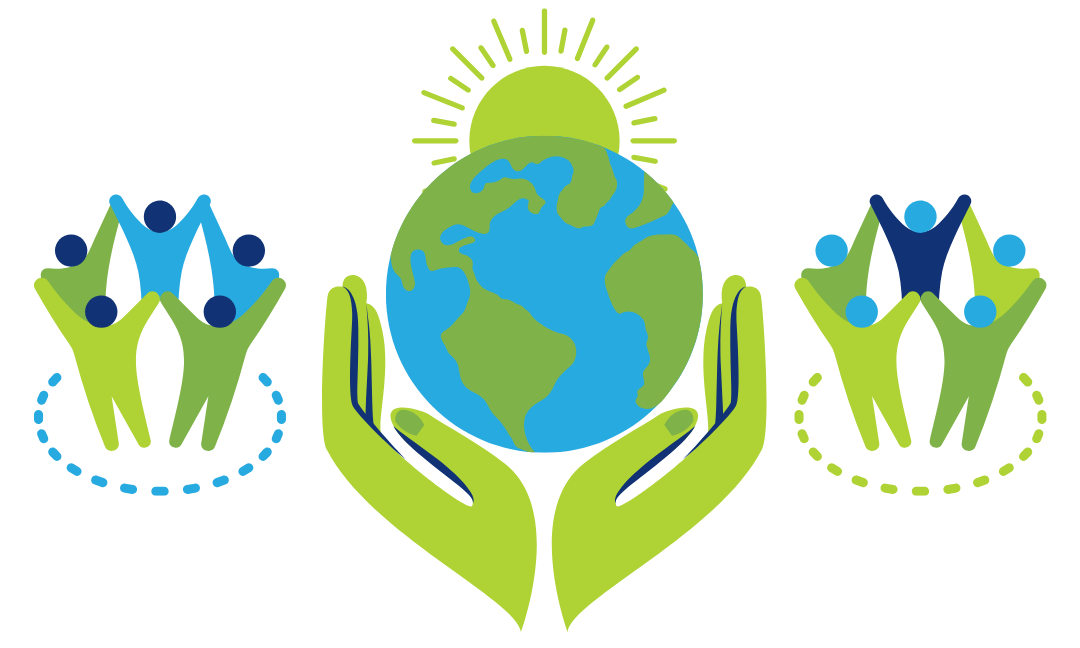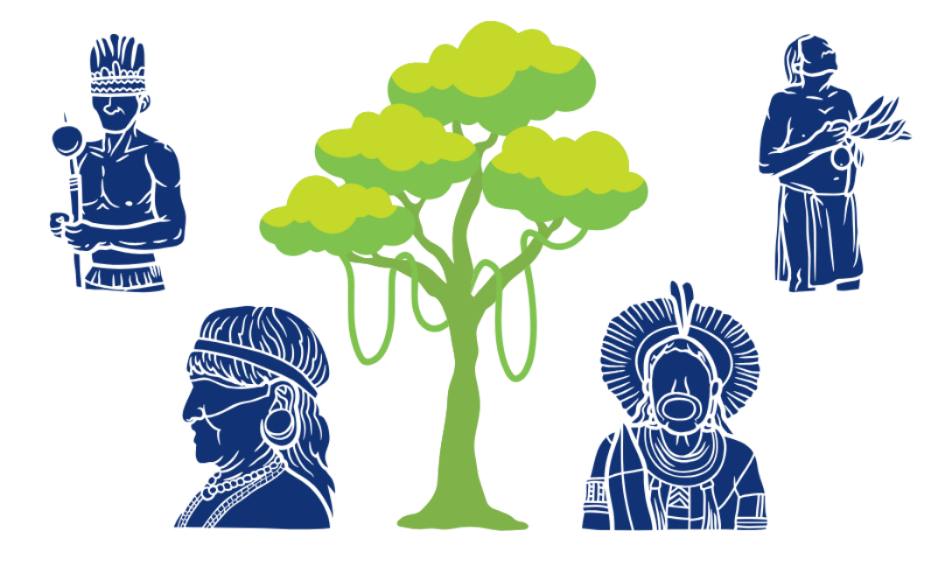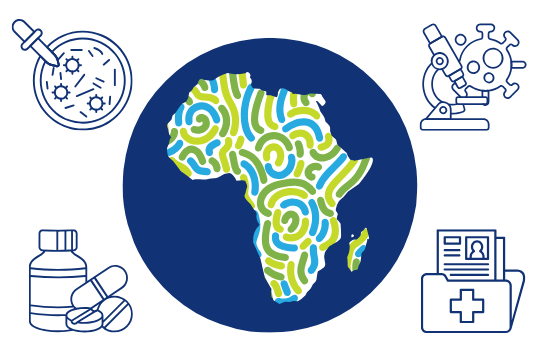
Can you make a difference for the planet and for your own health if you wait an extra year to update your smartphone or get a new laptop computer?
You can if it means using fewer electronic products that are loaded with toxic metals, says Dr. Dele Ogunseitan, a professor of population health and disease prevention at the University of California Irvine.
In this episode of One World, One Health, Dr. Ogunseitan talks about how even the best-laid plans for recycling electronic products can go awry, and what the consequences can be if TVs, smart appliances, or tablets get into landfills. “Waste should not be endangering your neighbors,” he says.
Maggie Fox (0:01)
Hello and Welcome to One World One Health, a place to talk about the latest ideas to improve the health of our planet and its people. I’m Maggie Fox.
Planet Earth faces many challenges: pollution, climate change and new and reemerging infectious diseases, and they’re all linked. This podcast is brought to you by the One Health Trust with byte sized insights into ways to help.
In this episode, we’re chatting with Dr. Dele Ogunseitan who’s a professor of population health and disease prevention at the University of California, Irvine. Among the many things he studies is how toxic pollutants affect the health of people and the environment. We’re chatting with Dele about E-waste, what it is, and how recycling might help protect not all the environment, but human health, Dele Thanks so much for taking the time to chat with us about this.
Dele Ogunseitan (0:55)
Thank you, Maggie. It’s a delight and an honor for me to be able to share my work with your audience.
Maggie Fox (1:02)
Can you tell us first off what is “E-waste”?
Dele Ogunseitan (1:06)
E-waste is a short way of referring to electronic waste. And you and I as well as everyone in your audience are responsible for generating e-waste because we all use mobile phones, laptop computers, iPads, earbuds, some home appliances, almost all of them now have electronic circuitry to make them function well. Most of these products don’t last long, maybe three to five years before we’re ready to upgrade them and purchase new versions. At the end of their useful life, these products can either be recycled, but we do know that a lot of them end up in the environment, landfills getting incinerated or simply dumped. And that’s when they become e-waste. And that’s the problem that we face in terms of just the sheer volume globally. And the fact that they contain toxic chemicals makes them particularly important for us to have solutions on how to deal with them.
Maggie Fox (2:13)
Can you tell us what some of these toxic chemicals are?
Dele Ogunseitan (2:16)
Yes. In the early days of manufacturing electronics, the printed circuit board used tin lead solder to attach the components to what we call the printed circuit board, the typically green board that you’ll see if you’ve ever opened up an electronic product. That lead is notorious as toxic and there is no safe level of exposure to lead. But in recent times, with the evolution of technology, there are additional toxic chemicals in electronic waste. Mercury used to be found in the screens, which were lit with fluorescent lighting, but in the batteries, we could have cadmium, nickel, all electronic products have a certain requirement to have flame retardants so that they don’t catch on fire and those chemicals toxic they’re brominated flame retardants that are also bad for the environment in terms of the ozone layer and also for human health.
There are electronic products that contain the notorious PFAs, powerful octanoic acid substances that are also now considered very dangerous for human health. So it’s a wide range of chemicals that are present. And that’s why we must keep them away from people and the environment, when products are no longer useful. They’re not dangerous when we’re using them. But it’s when we throw them out, and they get degraded that the toxins are released.
Maggie Fox (3:57)
So what happens to them when people throw them out? How do they get into the environment?
Dele Ogunseitan (4:01)
There are many policies at the state level in California and nationally, in some states, but not all, and also internationally to keep electronic products out of the domestic waste stream. But there is very limited infrastructure for collecting electronic products and recycling them. And so what happens is that people tend to store them at home. And when they move or do cleaning, they don’t really know where to put them. So they ultimately end up in the same bins as we throw out domestic waste. Sometimes, this goes into landfills where they could leach these metals into groundwater.
Sometimes from the United States, there is evidence that they’re shipped internationally and where there are no environmental policies or good liberal laws, people tend to try to recover small amounts of gold, copper and some other precious materials from E waste. And in doing so, they could bond them, and thereby release all of the toxic materials in the ash, or go into the atmosphere. And sometimes they are just dumped and when it rains, it contaminates soil and the water resources, rivers, streams, lakes, and groundwater. And when people use those resources, they are inadvertently exposed to these toxic chemicals, which are dangerous to the population’s health.
Maggie Fox (5:37)
And so you mentioned that California has some rules about recycling or properly disposing of these products and I know some other states in the US do. What you say indicates to me that despite these efforts, this stuff is getting into landfills, not just in the United States, but around the world.
Dele Ogunseitan (5:57)
That’s exactly right. It’s not for lack of knowledge that E-waste is toxic and dangerous, it’s also not for lack of trying to do policy. It’s the lack of infrastructure and public education about what to do. We did studies many years ago, in California, we found that most people are willing to travel up to four miles away from their home to dispose of electronic waste, e-waste, and they know it to be dangerous. But most of us cannot name a collection facility within four miles of our home. We also know that people are willing to pay a 10% premium price for less toxic electronic products, which do not generate as much waste. And so we need manufacturers to pay attention to the design of the products to reduce the toxic load.
But we also need the government agencies at the city level to the state level to invest in this collection infrastructures, including in my opinion that we should have an additional bin at every household for collecting hazardous waste, that waste management companies can come around maybe once a month, in a neighborhood to collect them. So we have the policies, we have not followed them up with the infrastructure and the education that’s needed to tighten the belt around this problem.
Maggie Fox (7:24)
And so if these products are collected separately and recycled, how does that help keep the toxins away from people?
Dele Ogunseitan (7:33)
The toxins that go in E-waste after it’s been discarded into the environment can last a very, very long time. And so we’re better off preventing those toxicants from getting into the environment and into people’s in our health space. So there are, as I noted earlier, that some people try to recover small amounts of gold and copper that’s present in e-waste. So those are precious resources. In fact, some research shows that there’s more gold in E-waste collectively than in mining natural ores. And so it can be profitable if we collect enough of it. And that keeps the toxic hands from reaching people and the environment but also saving precious resources for the planet.
Now that we’re all worried about climate change, we’re shifting to rechargeable batteries for cars for homes. And the reality is we’re now nearing a scarcity of metals like cobalt, which are needed for lithium ion batteries and other kinds of rechargeable batteries. But we throw it away in E waste with all its rechargeable batteries, small amounts of cobalt that we can also recover and reuse. Whereas when we throw it out into the environment, it becomes toxic impacting people’s health and environmental quality.
Maggie Fox (8:58)
So you use a term that’s called a circular economy. Can you explain how that fits in with everything you’ve just told us?
Dele Ogunseitan (9:05)
Thank you. It’s a relatively new term. Circular economy as the name implies, there’s a circularity of breaking the current practices from what we call the take-make waste, which is a linear economy. You take products from the planet through mining, you make electronic products and you throw them away as waste. So that’s a take-make waste linear economy.
The circular economy bends that loop. We can make the products we want, but the waste is returned into the “making loop.” So it circularizes that process by collecting all of the materials that we need from used electronics and using those materials to make new electronic products. That not only prevents us from depleting Natural Resources through mining, which has its own environmental problems but it also prevents the E-waste from becoming a problem for the environment and for people.
So completing that circle is what circular economy is about. And it can apply to many products, including plastics, but electronics in particular are subject to this circularization because we know we have the technology to do it, but we just have not invested in the infrastructure to get it done to essentially close the circle.
Maggie Fox (10:36)
And how does this fit into the whole idea of One Health that all of these things are linked: the climate, the environment, people, this toxic waste?
Dele Ogunseitan (10:45)
That’s a great question Maggie. One Health is an approach that begins by trying to understand that the health of people, the health of animals, and the health of the environment are all linked. If you take a toxic metal like lead, or mercury, we know, we have hundreds of years of research showing that these metals are toxic to people. And we can understand the symptoms, we can diagnose it and maybe even have some therapy to repair people’s health. However, we also know that lead is very toxic to animals, as well as Mercury. And we know that the ecosystem suffers when we throw out these pollutants into systems. You know, we have evidence of reproductive toxicity, deformation of animals, even plants suffer some of these impacts from toxic materials.
So One Health framework is very appropriate for this kind of work on E-waste, because when we pollute the environment, we need to look beyond just the people who come to the hospitals to seek care. But to track those pollutants, how might they be affecting other organisms, including bacteria, that the whole environmentalist system depends on in terms of the natural cycling of elements like carbon and nitrogen, and sulfur that are so critical for maintaining balance on our planet. When we destabilize that balance by introducing toxic chemicals, where they don’t belong, at concentrations that are so high that no organism can survive, then we’re really doing damage to planetary health. And One Health and planetary health in that respect are complementing frameworks.
Maggie Fox (12:58)
So if you, an average citizen, want to help, what can you do to help?
Dele Ogunseitan (13:02)
The first thing that I recommend is that we are kind of addicted to electronics. And I’m convinced that if we all use our phones, or laptops, or iPads or TVs, maybe one more year, we not only save money, but we probably will save a lot of E-waste from getting into the environment. I know that this sounds like we’re trying to tell the rich electronics manufacturing companies not to make as much profit because their profit is about selling us new products. But they could also make a lot of money by helping us repair products, and keeping them longer and giving us software that’s compatible. So that’s the first thing that consumers can do: consider buying products that are compatible with your old products. So the same charges, the same ability to use upgraded software, and don’t throw them out, most importantly, into the domestic trash.
If you can travel four or five miles to drop off at the renowned facility, please do so. Otherwise, there’s no way to recover these things once you put it in that bin that goes to the landfill.
So collect them over time if you don’t have time to do so now. So maybe over a year to put them all in one bag and drive them or take a bus or ride your bicycle to a place where you know they will treat it properly. And that’s important. Not all places that promise to treat you as properly do so. So do a little bit of research online, you’ll find a lot of information about places that make empty promises. Our waste should not be endangering our neighbors and I mean neighbors not just in the next block over but also in other countries where people need the jobs where they don’t need to compromise their life and their health to get that job done.
Maggie Fox (15:04)
Dele, thanks so much for sharing these ideas. It’s wonderful speaking with you.
Dele Ogunseitan (15:09)
Thank you Maggie. My pleasure.
Maggie Fox (15:12)
Listeners can share this podcast which is brought to you by the One Health Trust by email, LinkedIn or your favorite social media platform. And let us know what else you’d like to hear about at [email protected]. Thanks for listening!
Guest

Oladele “Dele” Ogunseitan, PhD serves as the University of California Presidential Chair and Professor of Population Health and Disease Prevention at the University of California, Irvine Program in Public Health. He is a renowned expert in the field of global health and one of the field’s preeminent researchers on antimicrobial resistance and stewardship.
Ogunseitan is one of the field’s preeminent researchers on the impacts of electronic waste on population health, environmental, and planetary health. He is a fellow of the American Academy of Microbiology, the American Association for the Advancement of Science, and of the British Royal Society of Arts, Manufactures, and Commerce. He was recently appointed to the World Health Organization’s Committee to address public health and emergency response.
Credits
Hosted and written by Maggie Fox
Special guest: Dr. Oladele Ogunseitan
Produced and edited by Samantha Serrano
Music composed and sound edited by Raquel Krügel
Transcript by Harsh Pingle







